10 Amazing Things Scientists Just Did with CRISPR
CRISPR technology
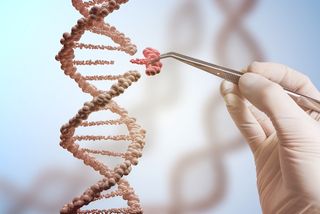
It's like someone has pressed fast-forward on the gene-editing field: A simple tool that scientists can wield to snip and edit DNA is speeding the pace of advancements that could lead to treating and preventing diseases.
Findings are now coming quickly, as researchers can publish the results of their work that's made use of the tool, called CRISPR-Cas9.
The tool, often called CRISPR for short, was first shown to be able to snip DNA in 2011. It consists of a protein and a cousin of DNA, called RNA. Scientists can use it to cut DNA strands at very precise locations, enabling them to remove mutated parts of genes from a strand of genetic material.
In the past year alone, dozens of scientific papers from researchers around the world have detailed the results of studies — some promising, some critical — that used CRISPR to snip out and replace unwanted DNA to develop treatments for cancer, HIV, blindness, chronic pain, muscular dystrophy and Huntington's disease, to name a few.
"The pace of basic research discoveries has exploded, thanks to CRISPR," said biochemist and CRISPR expert Sam Sternberg, the group leader of technology development at at Berkeley, California-based Caribou Biosciences Inc., which is developing CRISPR-based solutions for medicine, agriculture, and biological research.
Although it will be a few more years before any CRISPR-based treatments could be tested in people, "hardly a day goes by without numerous new publications outlining new findings about human health and human genetics that took advantage" of this new tool, Sternberg told Live Science.
Of course, humans are not the only species with a genome. CRISPR has applications in animals and plants, too, from disabling parasites, like those that cause malaria and Lyme disease, to improving the crop yields of potatoes, citrus and tomatoes.
"[CRISPR] is incredibly powerful. It has already brought a revolution to the day-to-day life in most laboratories," said molecular biologist Jason Sheltzer, principal investigator at the Sheltzer Lab at Cold Spring Harbor Laboratory in New York. Sheltzer and his team are using CRISPR to understand the biology of chromosomes and how errors associated with them may contribute to cancer.
“I am very hopeful that over the next decade gene editing will transition from being a primarily research tool to something that enables new treatments in the clinic,” said Neville Sanjana, of the New York Genome Center and an assistant professor of biology, neuroscience and physiology at New York University.
Here, we take a look at the recent advances in the fights against 10 diseases that demonstrate CRISPR's capabilities, and hint at things to come.
Cancer

A cure for cancer has alluded humankind since the Greek physician Hippocrates, who lived between 460 and 370 B.C., coined the word for this disease: karkinos. But because cancer, like many diseases, results from a mutation in a person's genome, researchers say it's possible that a CRISPR-based treatment could one day slow the speed at which a tumor spreads, or perhaps reverse the disease completely.
Some early work in this area is happening already in China, where regulations governing the use of gene editing in humans are more relaxed than they are in the United States.
In October 2016, a lung cancer patient in China became the first of 10 people in the world to receive an injection of cells that had been modified using CRISPR, the journal Nature reported. The researchers, led by oncologist Dr. Lu You at Sichuan University in Chengdu, modified the immune cells taken from the patient's own blood and disabled a gene that produces a protein that cancer cells normally hijack in order to divide and multiply. The hope is that without the protein, the cancer cells won’t multiply and the immune system will win out.
Research teams in the United States are also eyeing ways to use CRISPR to fight cancer. Dr. Carl June, director of translational research at the Abramson Cancer Center at the University of Pennsylvania, and his colleagues received approval in June 2016 from the National Institutes of Health to conduct a clinical trial on 18 cancer patients in late stages of melanoma (a skin cancer), sarcoma (a cancer of soft tissue) and multiple myeloma (a cancer of the bone marrow), according to a statement from the university. For this clinical trial, researchers will use CRISPR to alter three genes in patients' own immune system cells, in hopes of getting those cells to destroy the cancer cells in their bodies.
HIV
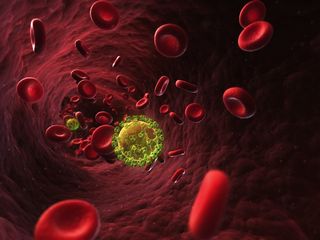
Eradicating HIV, the virus that causes AIDS, has been an uphill battle. Not only does the virus infect the very immune cells in the body that attack viruses, but it's also a notorious mutator. After HIV hijacks a cell in the body and begins to replicate, it generates many genetic variations of itself, which helps it evade drug therapies. This drug resistance is a huge problem in treating people who are infected with HIV, according to the World Health Organization.
CRISPR has HIV lined up in its sight, though. In May 2017, researchers at Temple University and the University of Pittsburgh used CRISPR to snip the virus from the cell it was infecting, shutting down the virus's ability to replicate. This use of the technique, which was tested in three different animal models, was the first time researchers had demonstrated a way to eliminate HIV from infected cells, according to the researchers, led by Chen Liang, a virologist at McGill University in Montreal. They reported the results of their study in the journal Molecular Therapy.
Huntington's disease
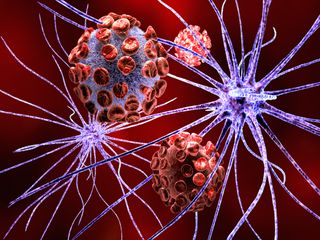
About 30,000 people in the United States have an inherited condition called Huntington's disease, a fatal genetic disorder that causes nerves in the brain to deteriorate over time, according to the Huntington's Disease Society of America. Symptoms include personality changes, mood swings, unsteady gait and slurred speech.
The condition results from a faulty gene that becomes larger than normal and produces a larger-than-normal form of a protein called huntingtin, which then breaks into smaller, toxic fragments that accumulate in neurons, disrupting their function, according to the National Institutes of Health.
But in June 2017, scientists reported in The Journal of Clinical Investigation that they had reversed the disease in lab mice that had been engineered to have a human mutant huntingtin gene in place of a mouse huntingtin gene. Su Yang, a Postdoctoral Fellow in the department of human genetics at Emory University in Atlanta, and Renbao Chang, at the Institute of Genetics and Developmental Biology at the Chinese Academy of Sciences, used CRISPR to snip out part of the mutant huntingtin gene that produces the toxic bits.
After they did that, the number of toxic fragments decreased in the mice's brains, and the neurons began to heal. The affected mice regained some of their motor control, balance and grip strength. Although their performance on certain tasks was not as good as that of healthy mice, the results showed the potential of CRISPR to help fight this condition.
In a statement, the scientists stressed that more rigorous studies need to be conducted before such a therapy could be used in humans.
Duchenne muscular dystrophy

Duchenne muscular dystrophy is a debilitating condition that develops because of a mutation in a single gene, called the dystrophin gene, which is one of the longest genes in the body. A team of researchers at the University of Texas Southwestern Medical Center led by molecular biology professor Eric Olson is working with CRISPR to find ways to fight Duchenne muscular dystrophy.
Because of the mutation in the dystrophin gene, the body doesn't make a functional form of the protein dystrophin, which is essential for muscle fiber health. Over time, the lack of this protein causes progressive muscle degeneration and weakness.
In April 2017, Olson and his team reported in the journal Science Advances that they had used a variation of the CRISPR tool, called CRISPR-Cpf1, to correct the mutation that causes Duchenne muscular dystrophy. They fixed the gene in human cells growing in lab dishes and in mice carrying the defective gene.
CRISPR-Cpf1 is another instrument in the gene-editing toolbox. It differs from the more commonly used CRISPR-Cas9 in that it's smaller, thus making it easier to deliver to muscle cells, according to a statement from UT Southwestern Medical Center. It also recognizes a different sequence of DNA than Cas9, which came in handy for editing the very long dystrophin gene.
Preventing blindness

One of the most common causes of childhood blindness is a condition called Leber congenital amaurosis, which affects about 2 to 3 per 100,000 newborns, according to the National Institutes of Health. The condition is inherited and is caused by mutations in at least 14 genes that are responsible for normal vision.
The Cambridge, Massachusetts-based biotech company Editas is working on a CRISPR-based therapy to reverse a type of the disease called Leber congenital amaurosis type 10. The company is aiming to file the necessary papers with the Food and Drug Administration by the end of 2017 to start the first human trials on treatments for this condition, the biotech news website Xconomy reported.
Editas was co-founded by Feng Zhang, a bioengineering professor at MIT who demonstrated that CRISPR-Cas9 could be used on human cells. Jennifer Doudna, of the Unversity of California, Berkeley, and Emmanuelle Charpentier, then of the University of Vienna, also demonstrated that CRISPR-Cas9 could snip DNA, and they filed a patent on the technology in 2012. The Broad Institute, which is part of MIT, submitted its patent in April 2014 and fast-tracked it, ultimately getting the patent. The Broad Institute's patent was upheld in February, 2017, after the University of California, Berkeley filed a lawsuit claiming Doudna had been first, Nature reported.
Chronic pain

Chronic pain is not an inherited genetic disease, but scientists are investigating ways to use CRISPR to curb back and joint pain by altering genes to reduce inflammation. Under normal conditions, inflammation is the body's way of telling the immune system to repair tissue. But chronic inflammation can do the opposite and damage tissue, eventually causing debilitating pain.
In March 2017, a team of researchers led by bioengineering assistant professor Robby Bowles of the University of Utah reported that they had used CRISPR to prevent certain cells from producing molecules that are designed to break down tissue and lead to the inflammation that causes pain, according to a statement from the university.
The technique could be used to delay the degeneration of tissue after back surgery, for example. This could speed healing and reduce the need for additional surgeries to correct tissue damage.
Lyme disease
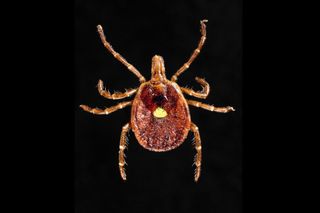
Kevin Esvelt, an evolutionary biologist at MIT, wants to wipe out Lyme disease, which is caused by a tick-borne bacterium that can spread from deer-tick bites to people. If left untreated, the infection can cause joint inflammation, nerve pain, heart palpitations, facial palsy and other problems, according to the CDC.
Although the bacteria that cause Lyme disease are transmitted to people by the deer tick, the ticks themselves don't have the bacteria when they hatch from eggs. Rather, young ticks pick up the bacteria when they feed, often on the white-footed mouse. Esvelt wants to reduce the disease by using CRISPR-Cas9 to genetically modify white-footed mice in a way that would make them and their offspring become immune to the bacteria and unable to pass it along to ticks, Wired reported.
In June 2016, Esvelt presented his solution to the residents of the islands of Nantucket and Martha's Vineyard, in Massachusetts, which have a major Lyme disease problem, the Cape Cod Times reported. Such mice will not be released on the island, however, until further testing is done, and that could take years.
Malaria

Malaria kills hundreds of thousands of people per year. In 2015, the most recent year for which the World Health Organization has statistics, there were roughly 212 million malaria cases and about 429,000 malaria deaths.
To attack the problem at the source, research teams at Imperial College London are aiming to reduce the populations of malaria-transmitting mosquitoes. According to a statement from the college, a group of scientists led by professors Austin Burt and Andrea Crisanti will investigate two main courses of action: genetically modifying the male mosquitoes so that they produce more male offspring, and genetically modifying the female insects in a way that lowers their fertility.
In December 2015, the team reported in the journal Nature that they had identified three genes to reduce female mosquito fertility. They also announced that they had found that CRISPR could work to target at least one of them.
Crops

Just as CRISPR can be used to modify the genomes of humans and animals, it can be used to modify the genomes of plants. Scientists are investigating ways to harness the tool's gene-editing ability to reduce disease in some crops and make others more robust.
Sophien Kamoun, a professor at the Sainsbury Laboratory in Norwich, England, for example, is looking at ways to remove the genes that make potatoes and wheat vulnerable to disease, PhysOrg reported. Zachary Lippman, a geneticist at Cold Spring Harbor Laboratory in New York, is using CRISPR to develop tomato plants with branches that are optimized to handle the weight of ripe tomatoes and not break, Nature reported. And in California, several labs are trying to harness CRISPR to tackle a plant disease called citrus greening, which is caused by bacteria that spread by insects that fly among plants in a citrus grove, Nature News reported.
Editing a viable human embryo
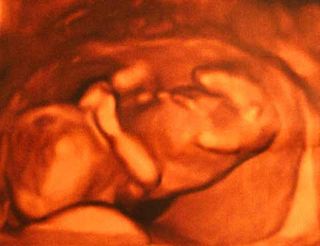
The speed with which CRISPR-based studies can go from hypothesis to result is astounding. Experiments that used to take months now take weeks, Sheltzer told Live Science. That speed has raised some concerns from policymakers and stakeholders, especially when it comes to using such a technology on humans.
In February 2017, scientists at The National Academies of Sciences, Engineering and Medicine issued an assessment of human gene editing, saying that it was acceptable but only under certain conditions. The group also said that altering the cells in embryos, eggs and sperm was ethically permissible provided that it was done to correct a disease or a disability, not to enhance a person's physical appearance or abilities, Science News reported.
Although no scientists in the United States have used CRISPR to modify a viable human embryo yet, a team led by Jianqiao Liu of Guangzhou Medical University in China reported such an advance March 1, 2017, in the journal Molecular Genetics and Genomics. The scientists used CRISPR-Cas9 to introduce and then edit out disease-causing mutations from human embryos. The study was done to show that the genetic editing could be done at the embryonic stage. The embryos were not implanted in a human.
Follow Live Science @livescience, Facebook & Google+.
Sign up for the Live Science daily newsletter now
Get the world’s most fascinating discoveries delivered straight to your inbox.

